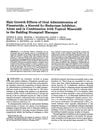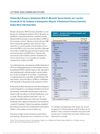How common is serious regrowth for people 35yrs old and up? Finasteride/Dutasteride 9/29/2025
Regrowth is more likely if hair follicles are still alive, regardless of age, but younger individuals often see better results due to early intervention. Treatments like finasteride, minoxidil, and dermarolling can help, but results vary based on individual factors such as the presence of miniaturized hairs and the speed of treatment initiation.
View this post in the Community →
Similar Community Posts Join
5 / 1000+ resultscommunity 4,5 months results: Fin, Minoxidil, microneedling. Details in comment
User shared 4.5-month hair loss treatment results using Fin, Minoxidil, and microneedling. Others discussed postponing hair transplant and adjusting microneedling depth.
community It’s getting worse. (4 months)
The conversation discusses hair loss treatments, with users suggesting the use of finasteride daily, considering minoxidil for aggressive hair loss, and discussing the normalcy of shedding during treatment. Some users recommend adding Nizoral shampoo and switching to dutasteride for better results.
community 1.5 years fin plus almost 3 years min, I think I’ve definitely made progress but I’m still not where I want to be, advice?
The user has been using finasteride for 1.5 years and minoxidil for almost 3 years for hair loss, and has seen some maintenance of hair but not significant regrowth. Suggestions from others include switching to dutasteride, trying oral minoxidil, and considering microneedling or hair fibers for better appearance.
community If follicles became miniaturized and haven’t grown in 3 years, are they dead ?
Hair loss and its potential treatments, such as minoxidil, finasteride, RU58841, dermarolling, and supplements. It discusses whether miniaturized follicles can be revived to grow again or must shed for new growth to appear.
community Oral Fin 5 months update. Was already on topical min for 10 years.
Using oral finasteride in combination with topical minoxidil and dermarolling for hair loss. Some users have reported significant regrowth when adding finasteride to their minoxidil routine, suggesting that reducing DHT levels may be a key factor in hair regrowth.
Related Research
6 / 1000+ results
research Experimental and Early Investigational Drugs for Androgenetic Alopecia
New hair loss treatments may include topical medications, injections, and improved transplant methods.
research Microneedles in Cosmetology: A SWOT Analysis
Cosmetic microneedles are promising for precise treatments but face challenges like skin damage and regulations.
research Efficacy Evaluation of a Novel Home-Used Device Based on Multiple Stimulation Technology on Hair Growth in Patients with Androgenetic Alopecia
The device effectively and safely increased hair growth in people with Androgenetic Alopecia.

research Status of Research on the Development and Regeneration of Hair Follicles
New regenerative medicine-based therapies for hair loss look promising but need more clinical validation.

research Hair Growth Effects of Oral Administration of Finasteride, a Steroid 5 Alpha-Reductase Inhibitor, Alone and in Combination with Topical Minoxidil in the Balding Stumptail Macaque
Finasteride and minoxidil together promote hair growth better than either alone.

research Platelet-Rich Plasma in Combination With 5% Minoxidil Topical Solution and 1 mg Oral Finasteride for the Treatment of Androgenetic Alopecia: A Randomized Placebo-Controlled, Double-Blind, Half-Head Study
Combining platelet-rich plasma with 5% minoxidil solution improves hair regrowth in androgenetic alopecia patients.